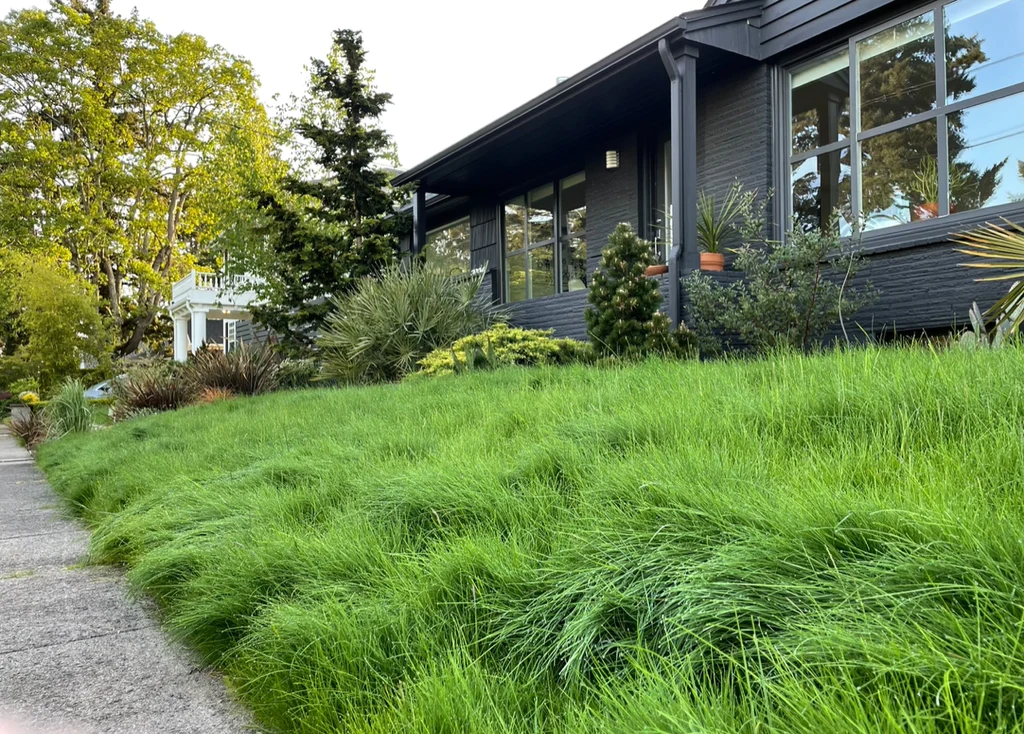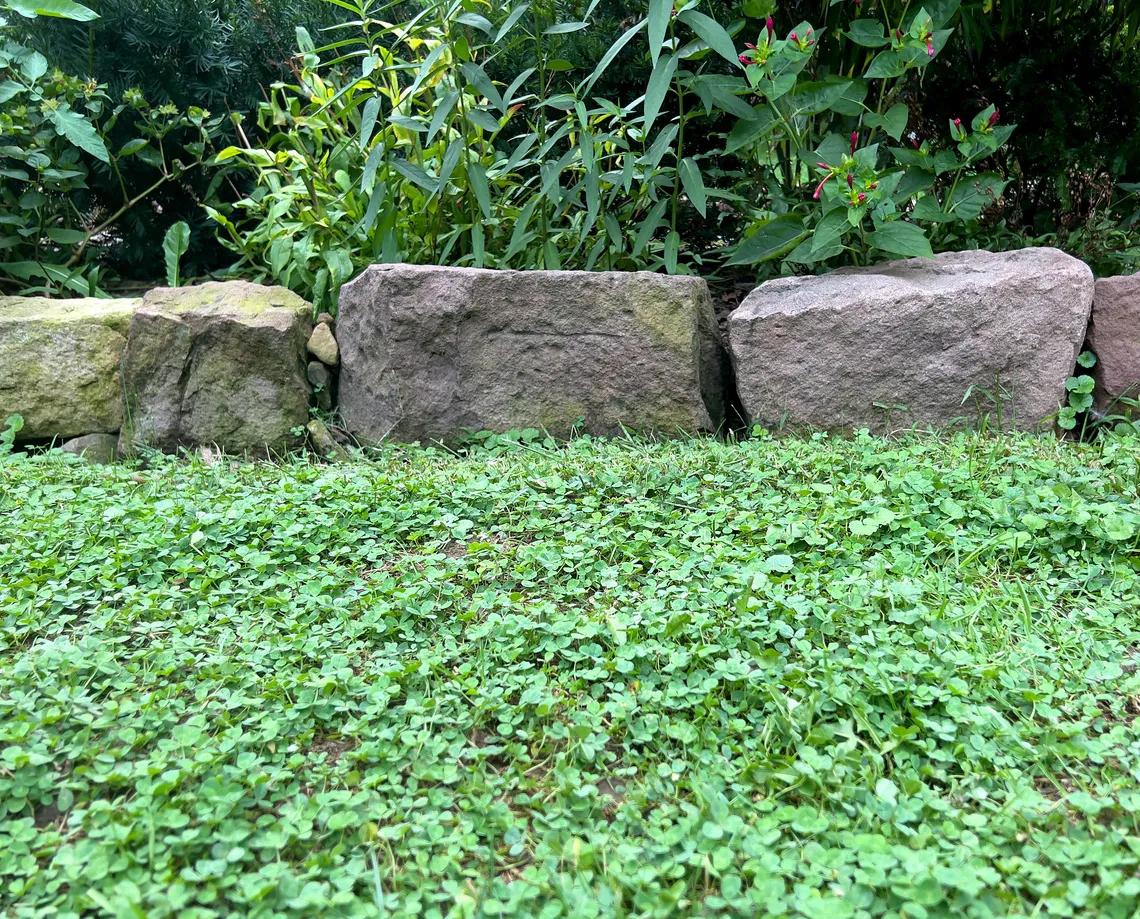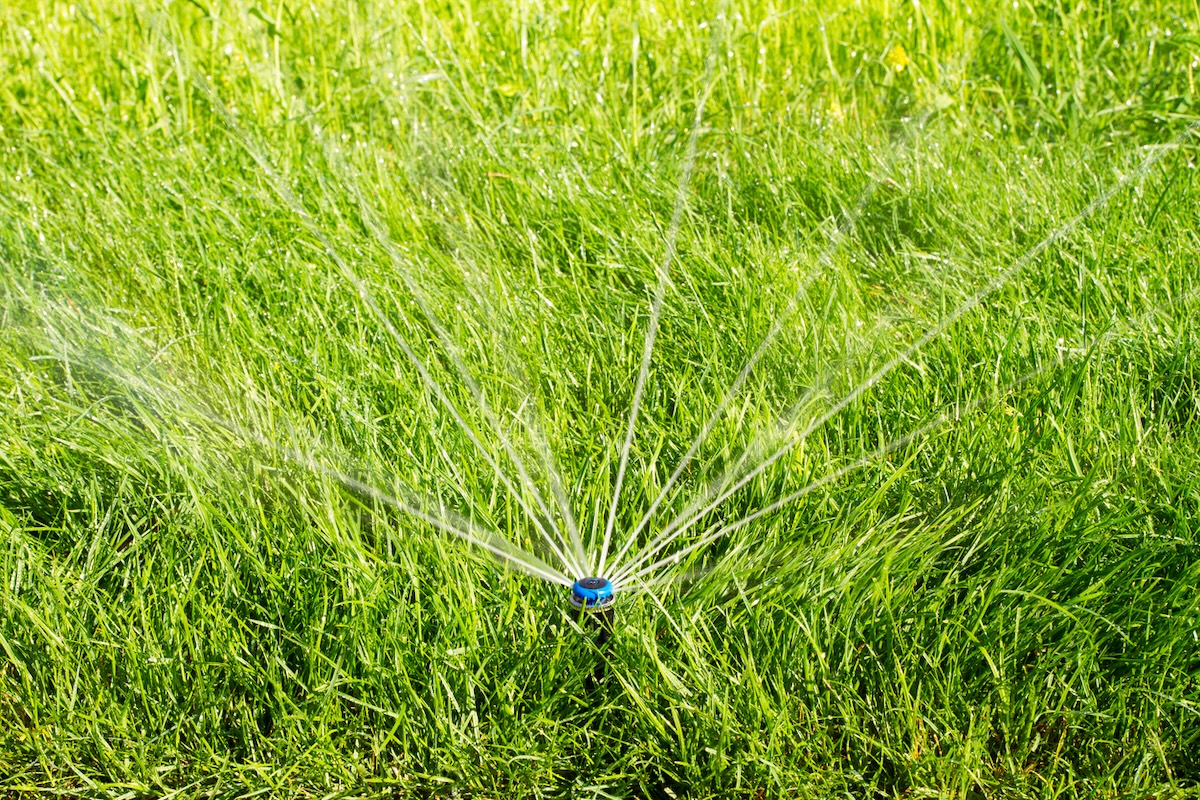

We may earn revenue from the products available on this page and participate in affiliate programs. Learn More ›
The days of perfectly manicured turfgrass lawns might be coming to a close as no-mow grass alternatives become more commonplace. Instead of spending Saturday mowing grass, imagine being free for other activities. Numerous no-mow grasses and grass alternatives can form an attractive lawn. Native turfgrasses and drought-tolerant grasses reduce the amount of maintenance—such as mowing, watering, fertilizing, and weeding—required to keep them looking good.
Extend No-Mow May, designed to provide food and shelter to pollinators, by planting a healthier no-mow grass lawn.
Related: I Let My Lawn Grow for No Mow May—Here’s What Happened
What Is No-Mow Grass?
No-mow grass, aka eco-lawn, typically consists of a blend of hard and fine cool-season fescues (which grow in almost all areas of the U.S. except for Zones 8 to 10). This blend creates a lush, thick lawn that needs only infrequent grass mowing. Be sure to mow at a height of 4 inches or more to avoid stressing the roots. Because it develops a dense root system, fescue rarely needs weeding or watering once established.
In addition to fescues, other low-maintenance grasses include buffalo grass, a slow-growing grass for southern and plains states; zoysia, another slow-growing grass ideal for sunny to partial shade areas; and Korean velvet grass, suitable for slopes and loamy soil. Clover, sedge, carpet grass, and even moss may work for some spaces and environments.

Benefits of a No-Mow Grass Lawn
In addition to saving time—and fuel and emissions—by not needing to mow your lawn (at least not very often), a no-mow lawn offers other advantages over a traditional turfgrass lawn. Some of the benefits include:
- Using less fertilizer. This is a money-saver, but can also keep runoff from the waterways, where it causes algae blooms that can kill fish and wildlife, and raise levels of ammonia and other substances that can pollute water and air. Synthetic fertilizers are often petroleum-based, so it’s actually “greener” to avoid them.
- Watering less. Drought-resistant grasses are definitely an advantage during water shortages, and grasses native to a region typically can survive on rainfall alone.
- Weeding less. Thick, lush no-mow lawns inhibit weed growth, saving time and chemicals designed to eradicate them.
- Attracting insects and wildlife. Native species free from chemicals make great hosts for pollinators and wildlife.
- Incentives. Some states, such as Arizona, Colorado, and California, offer rebates for converting lawns from turfgrass to drought-tolerant xeriscaping.
RELATED: Important Things to Know About Tapestry Lawns
How to Plant No-Mow Grass

Planting a no-mow lawn isn’t much different than establishing a traditional turfgrass lawn. As with most types of lawns, these are best planted in spring or early fall. Spring typically sees more soil moisture, but fall often has moderate temperatures, fewer weeds, and can receive a lot of rain.
1. Preparing the ground
Whether you use no-mow sod or no-mow grass seed, start with a clean slate by getting rid of any existing grass and weeds so they won’t compete with your new lawn. This can be done by placing black plastic, plywood, or carpeting over the area—a “smother cover”—for an entire growing season, digging up the sod, using an herbicide, or cultivating and tilling to kill the lawn.
2. Grading
A finely graded, smooth, level soil surface will encourage seed-to-soil contact. If using a broadcast or drop seeder to spread seed, follow by raking the seed into gently tilled soil.
No-till drillers and slit-seeders also benefit from a smooth, level surface, but tilling isn’t needed unless the soil is particularly rough. However, all remaining dead vegetation and rocks should be removed before planting to avoid clogging the machine.
3. Planting
Sow seeds at a rate of 7 pounds per 1,000 square feet using a broadcast or drop spreader or mechanical slit seeder. Cover with ⅛ to ¼ inch of soil. Use a roller or other implement to firm the seed in the soil. Cover lightly with mulch so that at least half of the soil is visible through the mulch layer.
Alternatively, spray seed mixed with water in a hydroseeder onto the soil. It should be applied at the same rate of 7 pounds per 1,000 square feet, or 10 to 11 pounds per 1,000 square feet if using hydromulch (a mixture of water, fiber mulch, and an adhesive to help prevent seed erosion).
RELATED: Can You Mow Wet Grass?
Maintaining a No-Mow Grass Lawn

To encourage germination and growth of a new lawn, water every other day for 4 to 6 weeks. If the soil is dry or late-spring temperatures are high, this is particularly important. Once roots have taken hold, occasional deep soaking is recommended (as opposed to frequent light watering). This helps promote deep root growth.
Fertilizing is not advised, and fertilizers with nitrogen are expressly cautioned against. No-mow lawns are cultivated to resist weeds and promote growth, so neither fertilizer nor weed control chemicals should be necessary.
You may need to mow only a couple times a season. It’s recommended to mow in June, when fescue grass produces seed heads. If you desire a manicured look rather than a natural one, mow your new lawn once a month through the growing season, but set the mower height at 4 inches. Mowing it shorter than that can damage the roots and weaken the grass. Never remove more than the top one-third of leafy growth or you risk harming the grass.
Only in late fall, when the growing season is ending, should you mow lower. Mowing to 2 inches in November can reduce thatch buildup and remove dead leaves, resulting in a fuller, denser lawn in the spring. Using a mulching mower or raking fallen leaves prevents them from smothering the grass.
